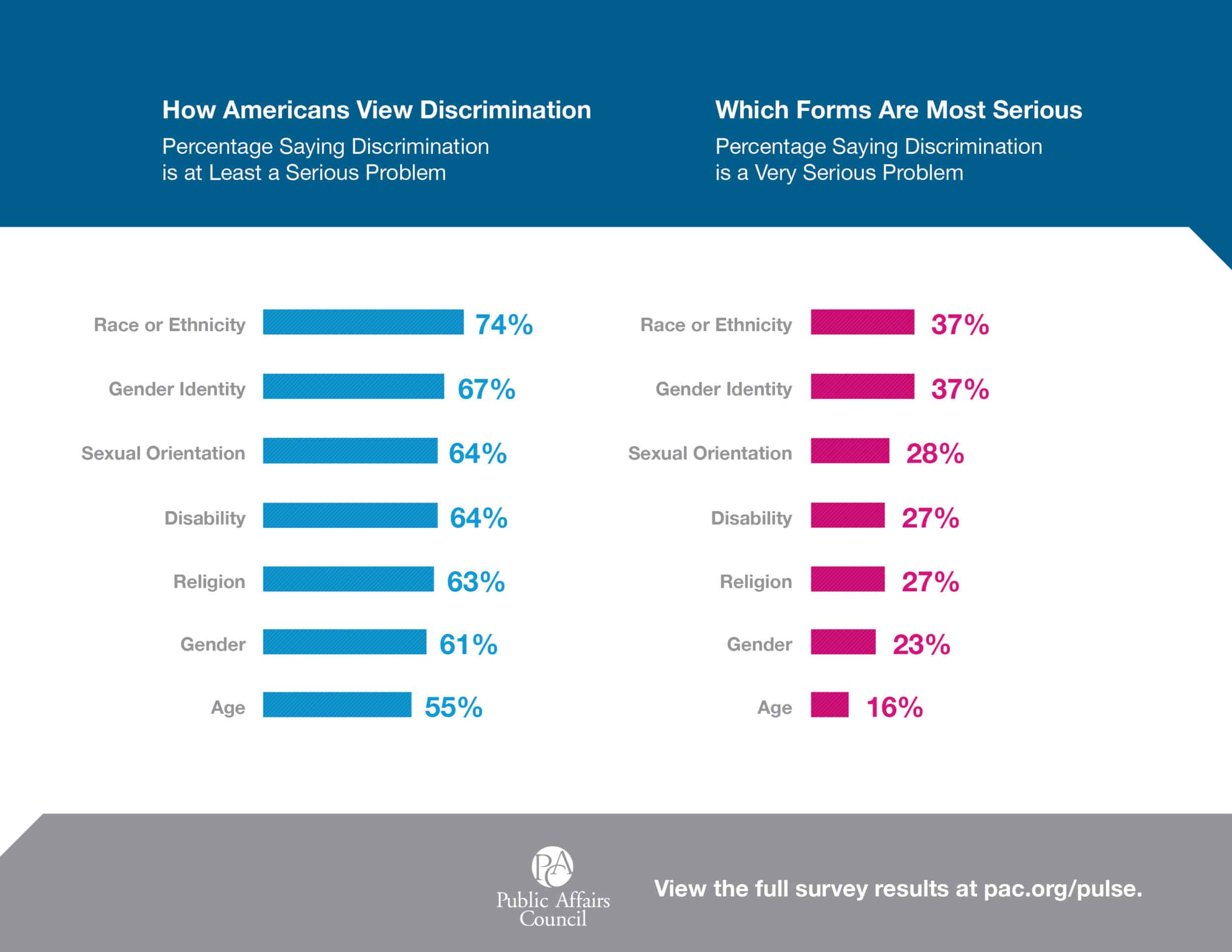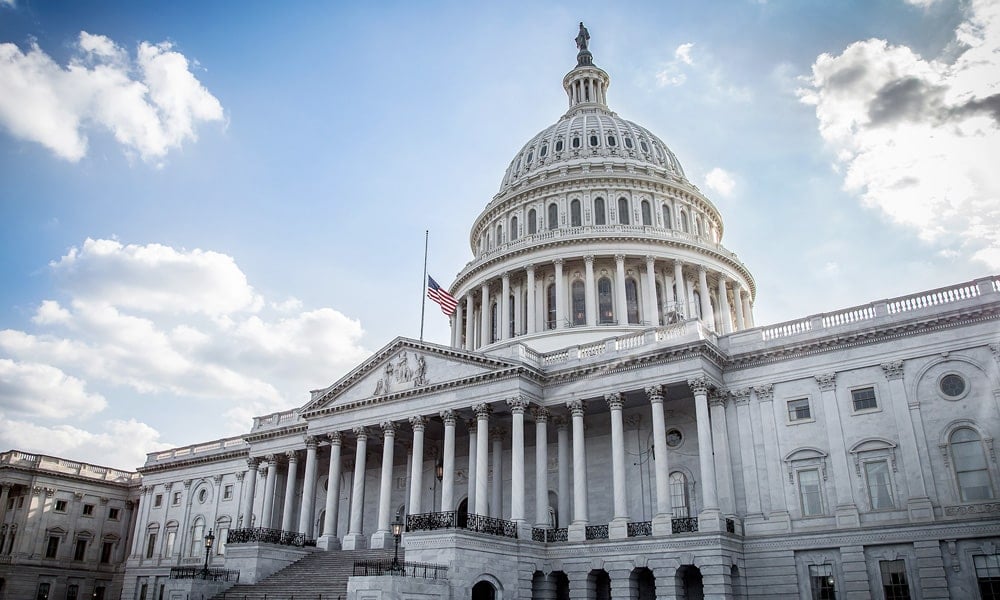Public Concerned About Discrimination in Many Forms
Strong majorities of Americans are concerned about discrimination in all of its forms: based on race, gender identity, sexual orientation, disability, religion, gender and age. Those are the findings of the 2016 Public Affairs Pulse survey, a new nationwide poll of 1,000 adults.
Methodology
Prepared by Public Opinion Strategies for the Public Affairs Council
The 2016 Pulse Survey poll results are from a survey conducted by Public Opinion Strategies on behalf of the Public Affairs Council from September 12-17, 2016. The survey was conducted by telephone among a cross section of 1,000 adults (18+) nationwide.
The national sample for this poll was drawn in the following manner: Individuals were selected proportionate to the nation’s population in accordance with a probability sample design that gives all landline telephone numbers (both listed and unlisted) an equal chance to be included. Adults, age 18 years old or over, were selected by a systematic procedure to provide a balance of respondents by sex. Of the 1,000 interviews 450 respondents (45%) were reached on a cell phone. The cell phone sample was drawn from a list of cell phone users nationally.
The data’s margin of error is ±3.1 percentage points for 1,000 adults at the 95% confidence. Sample tolerances for subgroups are larger. Minimal weights, including to race and ethnicity, geographic region, age, and education have been applied.
Past Pulse Surveys
Slides and infographics highlighting survey results are available for members to use for company briefings. Our senior staff are also frequently called on to make presentations on topics covered in the Public Affairs Pulse.









